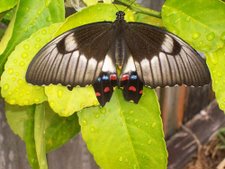Mao’s Last Dancer by Li Cunxin (2003) This autobiography of a Chinese peasant boy who goes on to become a world famous ballet dancer is a fabulous tale. On the one hand it is a story of courage, determination to succeed, loyalty to family and personal growth. On the other it gives an insight into the narrow world of Mao’s Cultural Revolution and its stifling effect on individuality. It also reveals the extraordinary amount of work and practice that lies behind success at the highest level. A poignant moment for me is when Li leaves China for the first time and stops over at Tokyo airport. He sees a cup of coffee advertised for US$3.00 and ‘in total astonishment’ calculates (twice) that this is equal to half a month’s salary for his factory worker father. The poverty of rural China constantly pierces the story and the Western reader’s conscience.
Learning to Fall by Philip Simmons (2002) (157pp) Simmons wrote this book after he was diagnosed with a rare terminal disease. This is a gem. It doesn’t get much better than this. He is an absolute inspiration and the short book is filled with wisdom, hope and inspiration. Words don’t do his words justice. You just have to read it yourself. Humbly recommended for anyone who is having or has had a big challenge. Philip’s words can be revisited regularly for they are a tonic for all ailments.
The Boy in the Striped Pyjamas by John Boyne (2006) (216pp) Please see my comment on the blog on 12 February 2007.
The Unknown Terrorist by Richard Flanagan (2006). Please see my comment on the blog on 14 January 2007.
Shantaram by Gregory Roberts (2003) (933pp). This is one of the best books I have read. This autobiography/novel is riveting for its story as well as its portrait of Mumbai. Written by an escaped Australian criminal it has the lot: romance, suspense, gun running and all sorts of crime, gangs and gurus, obscene opulence and wrenching poverty. Roberts does get the reader right inside India. Even if only half of the adventures were true it would still be unbelievable!
Inhaling the Mahatma by Christopher Kremmer (2006) (427pp) Kremmer is an insightful writer who has a talent for taking his readers into unfamiliar cultures and leaving them richer for the experience. In this book he shows us India based on his long encounters there as a reporter then a husband married into an Indian family. Religion and politics in all their Indian colour and complexity are handle skillfully and interestingly. The revelation of the story behind the intriguing title is just amazing and yet, so India.
The Last Nizam by John Zubrzycki (2006) (382pp). This is the remarkable story of an Indian prince, Mukarram Jah, the Eighth Nizam of Hyderabad. It is a story of unbelievable wealth – Jah’s grandfather had been the richest man in the world. Yet this prince turned his back on his dynasty and on history and in the 1970s bought a half-million acre sheep farm in Western Australia. I was mesmerized by a man who could reject all the sycophants and corruption of his bejeweled palaces in India to find solace in the remote outback only to be ripped off by so many Aussie ‘entrepreneurs’ who saw him as an easy target. Nevertheless Jah did have a lot of fun driving bulldozers and getting his hands dirty. Sadly it all fell apart and he now lives in exile in Istanbul.
The White Earth by Andrew McGahan (2004) (376pp) This is a really good Australian novel that covers a range of themes including family conflict, the taming of the land, and the conflict with Aborigines over Native Title. There are echoes of Hansonism and the simplistic solutions that it prposed for complex problems. For me the obsession with property and the potential dangers in inheritances and anticipated inheritances resonated strongly. Set in Queensland, McGahan interweaves contemporary developments with historical events and traditions in a way that is provocative and sobering.
Scar Tissue by Anthony Kiedis (2004) (480pp). I read this when son Jesse was visiting over Christmas. He had been reading it across the world and was raving so I grabbed it. It is the autobiography of the frontman for the popular band, Red Hot Chili Peppers. I learnt a lot about the drug scene and the sexual demands and opportunities that go with being a successful rock star. It is a tedious chronicle of his daily drug experiences and almost daily diverse sexual experiences. It’s interesting though, in the same way Keith Richards is interesting. Kiedis, like Richards, has defied the survival odds. The sad part is that in a perverse way, for many of his fans and readers it probably validates the drug scene and its link with rock music because he does enjoy many drug experiences and does survive and succeed. It has added to his charisma – just look at the Amazon reviews. If more people died or were totally stuffed at an early age, the horror of what drugs can do to a person and the ripple effect for their family just might get greater attention.
Wednesday, February 21, 2007
Subscribe to:
Post Comments (Atom)



1 comment:
Yo Yo,
Howzit up in sunny Buderim?
When writing the scientific name of a something conventionally it is written in italics and the second name (species is not capitalised.
So Monsterio deliciosa.
Tips aways
Banjo Jnr
Post a Comment